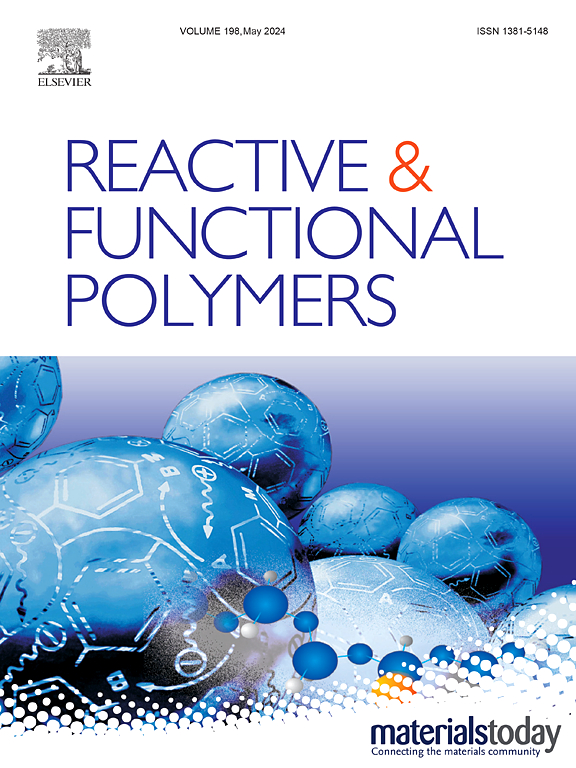杂环自固化邻苯二腈树脂
IF 5.1
3区 工程技术
Q1 CHEMISTRY, APPLIED
引用次数: 0
摘要
介绍了一类由各种杂环化合物组成的新型自固化邻苯二腈树脂。以甲醇和极性非质子溶剂丙酮或二甲亚砜为原料,在常温下合成了杂环亚胺PN (HIPN)树脂。通过质子(1H)和碳(13C)核磁共振(NMR)谱、差示扫描量热(DSC)、热重分析(TGA)、力学分析(扭转)、单晶x射线衍射(SCXRD)和流变学对树脂进行了表征。由于存在杂环、亚胺和PN基团,HIPN树脂具有自固化性能,在200℃下粘度范围为146 ~ 1295 cP。通过后固化到380°C制备了HIPN聚合物,并在1000°C下表现出优异的热稳定性,炭收率高达76%。与存储模量接近1600 MPa的PN系统相比,固化后的HIPN聚合物表现出了更好的机械性能。这些特性的结合表明,HIPN树脂是热机械应用的优秀材料。本文章由计算机程序翻译,如有差异,请以英文原文为准。

Heterocyclic self-curing phthalonitrile resins
A new class of self-curing phthalonitrile (PN) resins composed of various heterocycles is detailed. The heterocyclic-imine PN (HIPN) resins were synthesized utilizing methanol at ambient temperature and polar aprotic solvents acetone or dimethyl sulfoxide. Characterization of the resins was conducted via proton (1H) and carbon (13C) nuclear magnetic resonance (NMR) spectroscopy, differential scanning calorimetry (DSC), thermogravimetric analysis (TGA), mechanical analysis (torsion), single crystal X-ray diffraction (SCXRD), and rheometry. The HIPN resins were self-curing due to the heterocycle, imine, and PN moieties present and displayed a range of viscosities from 146 to 1295 cP at 200 °C. The resulting HIPN polymers were prepared by post-curing to 380 °C and exhibited excellent thermal stability up to a 76 % char yield at 1000 °C. The cured HIPN polymers displayed improved mechanical performance in comparison to rival PN systems with storage moduli near 1600 MPa. This combination of properties suggests the HIPN resins are excellent materials for thermomechanical applications.
求助全文
通过发布文献求助,成功后即可免费获取论文全文。
去求助
来源期刊

Reactive & Functional Polymers
工程技术-高分子科学
CiteScore
8.90
自引率
5.90%
发文量
259
审稿时长
27 days
期刊介绍:
Reactive & Functional Polymers provides a forum to disseminate original ideas, concepts and developments in the science and technology of polymers with functional groups, which impart specific chemical reactivity or physical, chemical, structural, biological, and pharmacological functionality. The scope covers organic polymers, acting for instance as reagents, catalysts, templates, ion-exchangers, selective sorbents, chelating or antimicrobial agents, drug carriers, sensors, membranes, and hydrogels. This also includes reactive cross-linkable prepolymers and high-performance thermosetting polymers, natural or degradable polymers, conducting polymers, and porous polymers.
Original research articles must contain thorough molecular and material characterization data on synthesis of the above polymers in combination with their applications. Applications include but are not limited to catalysis, water or effluent treatment, separations and recovery, electronics and information storage, energy conversion, encapsulation, or adhesion.
 求助内容:
求助内容: 应助结果提醒方式:
应助结果提醒方式:


